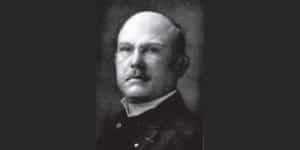Albert Mehrabian biography and books

Albert Mehrabian (1939, Professor Emeritus) is best known for his ground breaking theories on verbal and non-verbal communication. The theories of Albert Mehrabian are quoted all over the world and in particular his 7 38 55 rule of Communication.
Albert Mehrabian biography
Education
Before Albert Mehrabian became interested in psychology, he obtained a BSc. and an MSc. degree in engineering and natural science from the Massachusetts Institute of Technology (MIT).
From his background in engineering and natural Mehrabian understood that it was difficult to test the validity of subjective observations. One of his achievements in the form of recognition for his research was when he obtained his doctorate (Ph.D.) from the Clark University in 1964.
He devoted more than 40 years of research to the development of psychological scales and theoretical models for describing and measuring complex psychological phenomena.
His research led to the development of methods for selecting personal names that are conducive to a desirable impression profile (ethical, caring, popular, fun successful, masculine and feminine) and methods for selecting product, service or company names that facilitate customer appeal.
He has served as editor to major scientific journals including the Journal of Personality and Social Psychology and the Journal of Psychology. Furthermore, Mehrabian has written a number of books. He has also served as a consultant to many global organizations in which strategic and complex systems of communication were an everyday occurrence.
He is now retired.
Publications and books by Albert Mehrabian et al.
- 1997. Relations among personality scales of aggression, violence, and empathy: Validational evidence bearing on the risk of eruptive violence scale. Aggressive behavior, 23(6), 433-445.
- 1996. Pleasure-arousal-dominance: A general framework for describing and measuring individual differences in Temperament. Journal: Current Psychology, vol. 14, no. 4, pp. 261-292.
- 1995. Framework for a comprehensive description and measurement of emotional states. Genetic, social, and general psychology monographs.
- 1994. Effects of color on emotions. Journal of Experimental Psychology-general, vol. 123, no. 4, pp. 394-409.
- 1981, 1971. Silent Messages: Implicit Communication of Emotions and Attitudes. Wadsworth.
- 1980. Basic Dimensions for a General Psychological Theory Implications for Personality, Social, Environmental, and Developmental Studies.
- 1980. An Approach to Environmental Psychology. The MIT Pres.
- 1977. Evidence for a three-factor theory of emotions. Journal of Research in Personality, vol. 11, no. 3, pp. 273-294.
- 1976. Public places and private spaces: the psychology of work, play, and living environments. Basic Books.
- 1976. Environmental variables in consumer research. Journal of Consumer Research, 3(1), 62-63.
- 1974. A theory of affiliation. Lexington Books.
- 1972. Non verbal Communication. Aldine-Atherton.
- 1972. A measure of emotional empathy. Journal of Personality, vol. 40, no. 4, pp. 525-543.
- 1969. Nonverbal concomitants of perceived and intended persuasiveness. Journal of Personality and Social psychology, 13(1), 37.
- 1969. Significance of posture and position in the communication of attitude and status relationships. Journal: Psychological Bulletin, vol. 71, no. 5, pp. 359-372.
- 1968. Language within language: Immediacy, a channel in verbal communication. Ardent Media.
- 1968. Some referents and measures of nonverbal behavior. Behavior Research Methods & Instrumentation, 1(6), 203-207.
- 1968. Male and Female Scales of the Tendency to Achieve. Journal: Educational and Psychological Measurement, vol. 28, no. 2, pp. 493-502.
- 1968. Inference of attitudes from the posture, orientation, and distance of a communicator. Journal of consulting and clinical psychology, 32(3), 296.
- 1967. Inference of attitudes from non verbal communication in two channels. Journal of Consulting Psychology , vol. 31, no. 3, pp. 248-252.
- 1967. Decoding of Inconsistent Communications. Journal of Personality and Social Psychology 6 (1): 109–114.
How to cite this article:
Van Vliet, V. (2012). Albert Mehrabian. Retrieved [insert date] from Toolshero: https://www.toolshero.com/toolsheroes/albert-mehrabian/
Original publication date: 04/02/2012 | Last update: 07/04/2023
Add a link to this page on your website:
<a href=”https://www.toolshero.com/toolsheroes/albert-mehrabian/”>Toolshero: Albert Mehrabian</a>











